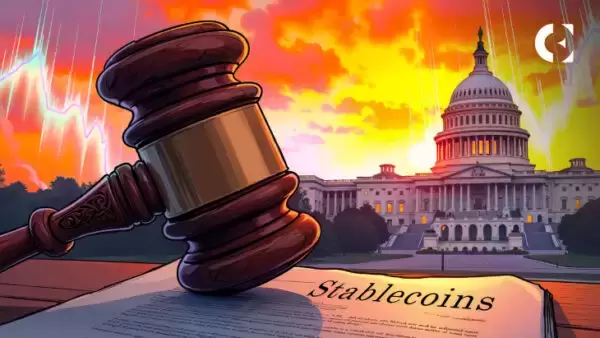 |
|
 |
|
 |
|
 |
|
 |
|
 |
|
 |
|
 |
|
 |
|
 |
|
 |
|
 |
|
 |
|
 |
|
 |
|
Nachrichtenartikel zu Kryptowährungen
Fee-less Crypto Networks: A New Era of Digital Finance?
Jan 08, 2025 at 02:04 am

Everyone despises fees, especially in the realm of cryptocurrencies. But, they are often considered a necessary inconvenience. After all, networks need to charge these fees to cover the costs of processing and confirming transactions, especially with frequent transactions.
Now, a question that you’ve probably asked yourself at some point is “Which network doesn’t charge network fees?” Does that even exist? Well, believe it or not, there are some networks out there that do offer fee-less transactions. It’s uncommon, but it exists.
Curious about which ones and how they achieve this financial magic? Some of these networks even position themselves as ideal for microtransactions and IoT applications, which may change how you think about digital currency exchanges.
Let’s explore these options further, and you might be surprised at what you find.
Understanding Network Fees in Blockchain
When sending cryptocurrency, you incur network fees, which serve as incentives for miners or validators to process and confirm transactions. Think of these fees as the toll charges for using the highway of digital currency.
The necessity for network fees varies with each cryptocurrency because they hinge on the underlying consensus mechanisms. For example, Bitcoin employs a Proof-of-Work (PoW) mechanism, which requires miners to solve complex puzzles. In contrast, Proof-of-Stake (PoS) systems like Ethereum involve validators staking their coins to validate transactions.
You’ve probably noticed that fees aren’t universal - they fluctuate based on several factors. Larger transactions might cost more due to their hefty data load, especially with UTXO-based systems like Bitcoin.
Another critical element is the fee rate. During times of high network demand, costs can spike. Of course, different networks also have different fees.
Fee-Less and Low-Fee Networks
Fee-less and low-fee options offer distinct advantages. Fee-less networks like IOTA and Nano completely remove transaction costs, using innovative technologies such as Tangle and Open Representative Voting to make operations seamless and cost-free.
In contrast, networks like TRON and Stellar provide very low-fee environments where your costs are kept to a minimum. They are often considered to be two of the cheapest crypto to transfer.
Although cryptocurrency networks are often associated with transaction fees, emerging technologies now offer alternatives that minimize or eliminate these costs. Fee-less data and value transfer are increasingly possible thanks to innovative frameworks that bypass traditional mining.
Notable Fee-Less Crypto Networks
Okay, let’s take a closer look at some of the cryptocurrencies that allow fee-less transactions.
1. IOTA
As one of the pioneers in creating a fee-less cryptocurrency network, IOTA employs a unique directed acyclic graph (DAG) structure known as the Tangle, which eliminates the need for traditional miners and their associated costs.
This innovation allows for fee-less data and value exchanges. Unlike typical blockchain systems, IOTA’s fee-less nature means that you engage directly with the network, bypassing hurdles that often slow down or complicate transactions on other platforms.
Here’s why IOTA is amazing:
2. Nano
Nano owes its fee-less nature thanks to its novel Block Lattice architecture that allows each user to maintain a personal blockchain.
What’s important is that this unique structure eliminates the need for traditional transaction fees.
Every transaction occurs virtually instantly, with confirmations happening in about one second. This means funds are moved extremely quickly. You won’t have to worry about delays or extra costs when you’re using Nano, as it streamlines the entire process by cutting out unnecessary fees.
Unlike other networks that depend on energy-intensive processes, Nano is designed to be energy-efficient. This means it bypasses traditional mining, which is obviously great in terms of fees, but it’s also good for the environment.
Such efficiency makes Nano perfect for everyday transactions and microtransactions.
3. Base
Base is an Ethereum layer 2 scaling solution developed by Coinbase. It enables fee-less USDC transfers when using Coinbase Wallet in Simple Mode. There are quite a few Ethereum layer 2s that make transactions much cheaper than Ethereum, but Base is the one that makes them completely fee-less.
This makes Base particularly appealing for smaller transactions.
Here’s what you need to know about Base:
How Do Fee-Less Crypto Networks Work?
You might wonder how fee-less crypto networks operate effectively without traditional transaction fees. These networks often rely on alternative funding models and consensus mechanisms like IOTA’s Tangle or Nano’s Open Representative Voting. They employ different technologies to confirm transactions without miners.
However, while these approaches improve user accessibility and cost savings, they also come with potential trade-offs, such as balancing security and preventing network abuse.
Alternative Funding Models
For instance, in IOTA’s Tangle, you confirm your transaction by validating
Haftungsausschluss:info@kdj.com
Die bereitgestellten Informationen stellen keine Handelsberatung dar. kdj.com übernimmt keine Verantwortung für Investitionen, die auf der Grundlage der in diesem Artikel bereitgestellten Informationen getätigt werden. Kryptowährungen sind sehr volatil und es wird dringend empfohlen, nach gründlicher Recherche mit Vorsicht zu investieren!
Wenn Sie glauben, dass der auf dieser Website verwendete Inhalt Ihr Urheberrecht verletzt, kontaktieren Sie uns bitte umgehend (info@kdj.com) und wir werden ihn umgehend löschen.
-

- Fidelity Investments führt ein individuelles Altersvorsorgekonto (IRA) ein, mit dem Privatinvestoren in Kryptowährungen investieren können
- Apr 03, 2025 at 10:10 am
- Laut der Website des Unternehmens können Anleger ihr Altersvorsorgeportfolio über Fidelity Crypto für IRAs in virtuelle Vermögenswerte hinzufügen. Bitcoin, Ether und Litecoin sind jedoch das derzeit verfügbare Vermögen.
-

- Präsident Donald Trump kündigt umfassende gegenseitige Tarife für globale Importe an und erklärt am 2. April 2025, „Befreiungstag“, erklärt.
- Apr 03, 2025 at 10:10 am
- Präsident Donald Trump war der 2. April 2025 als „Befreiungstag“ für die amerikanische Industrie und unterzeichnete eine Anordnung der Exekutive, um Importe gegenseitige Zölle aufzuerlegen
-

- Der Preis von Solana (SOL) versucht verzweifelt, über den wichtigsten Support -Niveaus zu bleiben, was dem zunehmenden Druck steigt
- Apr 03, 2025 at 10:05 am
- In den letzten 24 Stunden stürzte Sol von 138 bis 131 US-Dollar ab und löschte die Gewinne von einer Rallye von Mitte März aus. Technische Diagramme zeigen eine bärische Ablehnung bei 50% Fibonacci Retracement Level (146,5 USD)
-

- Ethereum (ETH) steht erneut im Rampenlicht, da technische Indikatoren bullische und Netzwerkaktivitäten auf einen möglichen Turnaround hinweisen.
- Apr 03, 2025 at 10:05 am
- Die ETH handelt derzeit mit 1900 US$, wobei Analysten auf einen potenziellen Bullenlauf hinweisen, wenn das Vermögenswert die wichtigsten Widerstandsniveaus zurückfordern kann.
-

- Fortschritte des US House Financial Services Committee „Stable Act“, um einen engagierten Rahmen für die Regulierung von Stablecoin zu schaffen
- Apr 03, 2025 at 10:00 am
- Das stabile Gesetz, mit dem ein dediziertes föderales Rahmen für die Stablecoin -Regulierung geschaffen wurde, hat Berichten zufolge eine signifikante Unterstützung für zwei Parteien erhalten.
-

-

- Schockierendes Filmmaterial hat eine Frau entstand
- Apr 03, 2025 at 09:55 am
- Es ist schockierendes Filmmaterial entstanden, als eine Frau ein Plakat des unabhängigen Fowler-Abgeordneten Dai Le abschneidet und sagte, sie tut dies, weil der vietnamesisch-australische „kommunistische“ und ein „Muslim“ ist.
-

-




























































